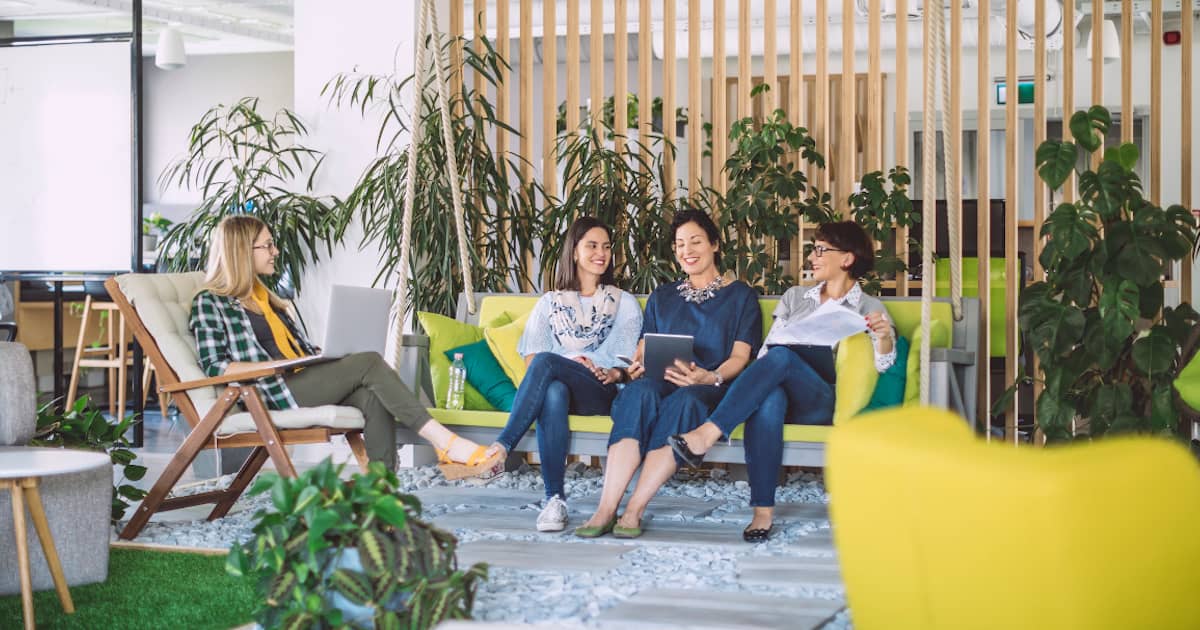Promoting Workplace Mental Health Through Office Interior Design

It’s been a hectic 2020 marked by working from home, social distancing and a gradual return to normal life. It has affected many business, some had to downsize or shutdown and have their current office space reinstated. While this period has been a challenging time to business owners, it also has been an opportunity to take a step back to re-evaluate business operations.
Since the end of September, more Singaporean businesses have been allowed to resume their activities as additional restrictions have been lifted. This means that increasing numbers of workers are going back to the office. Apart from focusing on health and safety measures pertaining to the Covid-19 pandemic, enterprises also have to think about mental health. In this dynamic and somewhat uncertain moment, people are plagued by fears for the future and anxiety.
The office environment can be modified to inspire, help employees relax and feel at ease.
In honour of October 10, the World Mental Health Day, we have compiled a list of suggestions pertaining to inspiring and uplifting workspace design. When a bit of thought and creativity are put in office interior design, the outcome can be quite positive and conductive of good psychological health.
Can We Design Offices for Better Mental Health?
First things first – is office décor really that impactful when it comes to mental health? The short answer is yes.
People spend approximately 33 per cent of their weekly time at a workplace venue. Environmental psychologists have studied the effect of the office environment on the individual and they’ve concluded that it affects job satisfaction, performance and the health of the people spending time there.
Light, colour and even the proper organisation of a work space can have an impact on the human psyche. We interact with stimuli in our environment. These stimuli can have a positive or a negative effect, depending on the manner they’re being interpreted.
The good news is that a number of simple changes can make the office more conductive of good mental health. These changes can be introduced quickly, they don’t cost a lot and the visual effect of introducing such modifications is immediately noticeable.
Reducing Stress and Anxiety Through Agile Work Spaces
Restrictive environment like the office cubicle are the ones that contribute to feelings of isolation and even anxiety. This is just one of the reasons why the adoption of agile work spaces has been on the rise over the past few years.
New work spaces are flexible. They encourage creativity and personalisation. Modular furniture and units can easily be re-arranged to address the specific needs of the worker. Movable partitions can also be utilised to create little spaces for seclusion upon necessity.
A person working in an office does not have static needs every single day of the week. This is the reason why fixed, rigid spaces do not work. On the contrary – many people find them to be stifling and even suffocating.
Working environments focused on mental health feature multiple zones – for collaborative work, relaxation, problem solving, etc. Choose such zones on the basis of the work that you do and the specific dynamics within each team.
Light and Colour Selections
When it comes to creating an uplifting environment, two factors play a much bigger role than all others – light and colour.
Natural light is essential. A link has already been established between natural light insufficiency and seasonal depression. Natural light creates a bright, cheerful environment that people would love to spend more time in.
Even if an office isn’t blessed with huge windows, interior designers can come up with clever solutions to maximise the presence of natural light. Something as simple as the introduction of reflective surfaces can make an office space appear much brighter.
A similar philosophy applies to colour selection.
Some colours are considered warm and inspiring – yellow, orange, soft red tones. Some colours are peaceful and relaxing while others are deemed aggressive. Choosing the right colours for each part of the office can enhance the function of the space and get employees in the right mindset for the task at hand.
Nature and Art
There are two additional office design elements that deserve to be discussed in connection to mental health improvements.
Bringing nature inside is probably one of the easiest ways to make people feel right at home in the office. Clinical research suggests that indoor plants make us feel better. In fact, plants in the office can improve concentration and bring productivity up by as much as 15 per cent. They also reduce stress levels and bring some mood enhancement.
The office environment can be enriched even further through the selection of appropriate art.
An entire art wall or a corner dedicated to a beautiful visual experience will give you the perfect space to chill and share a fun moment with colleagues. Getting employees themselves involved in the selection of the right artwork is another excellent idea to increase engagement.
The type of art itself doesn’t matter – you can have black and white photographs, abstract paintings or even graffiti on the wall. What matters is breaking away from the traditionally cold and aloof corporate environment.
Design impacts office culture, interactions between employees and dynamics within this macrocosm. It’s not just decorations – every single décor piece has a function.
Choosing decorations and renovating an office randomly isn’t the best way to extract the most from that corporate space. You have to put some effort into personalisation and getting the workspace to match the needs of the team that will be “inhabiting” it.
Singapore Office & Retail Design Consultants knows what it takes to make a work venue shine. We can conceptualise, design, build and manage such a project on your behalf. From the very first step to the introduction of soft finishing – we will handle all.
Contact us today to start crafting the best contemporary work space for your team.
